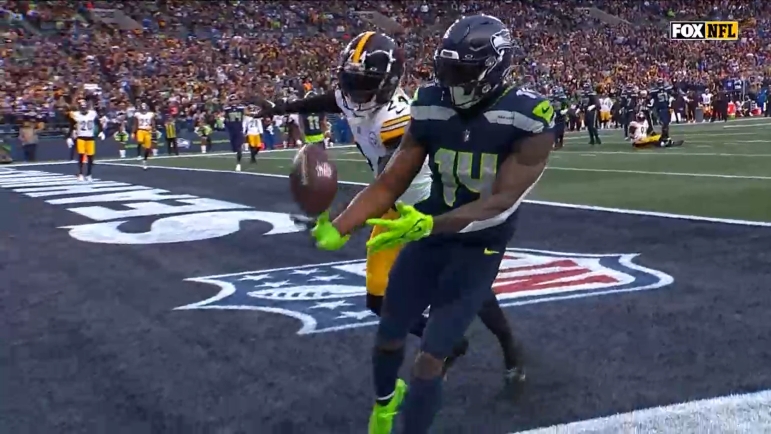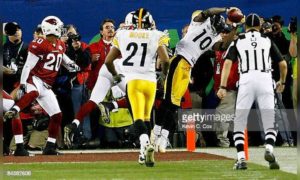I know this is awfully delayed but I finally got around to tabulating my charting and data of the Pittsburgh Steelers’ defense from the 2023 season. Team and individual statistics to give a thorough feel for this group’s performance.
For context, this is out of 1,136 snaps, excluding kneel-downs and no-plays due to penalty, pre and post-snap.
– Pittsburgh’s 1,136 snaps are the most we’ve tracked in our nine years of charting things. Granted, they’re in a 17-game season but even compared to the previous two seasons and on a per-game basis, it’s a high number. Here are the yearly figures.
2023: 1,136 snaps (66.8 per game)
2022: 1,012 snaps (59.5 per game)
2021: 1,108 snaps (65.2 per game)
2020: 992 snaps (62 per game)
2019: 1,067 snaps (66.7 per game)
2018: 1,021 snaps (63.8 per game)
2017: 979 snaps (61.2 per game)
2016: 1,040 snaps (65.0 per game)
2015: 1,102 snaps (68.9 per game)
– That per-game figure slightly decreased after our previous check-in at the halfway point of the year. Still, coming even somewhat close to 70 snaps per game won’t be the team’s target in 2023. And it’s a serious increase over last year.
– By personnel grouping, starting with a broad view, here’s the team’s breakdown.
Nickel: 37.1 percent (421 snaps)
3-4: 34.6 percent (393 snaps)
Dime: 22.0 percent (250 snaps)
4-4: 4.9 percent (56 snaps)
3-5: 0.4 percent (5 snaps)
3-3-5: 0.4 percent (4 snaps)
Goal Line: 0.3 percent (3 snaps)
Amoeba/1-4-6: 0.3 percent (3 snaps)
2-5-4: .09 percent (1 snap)
– It’s a big increase in base/3-4 defense from a year ago, which sat at 24.9 percent in 2022. Dime usage was also up by about five percent compared to a year ago. There was less of a variety of these more broad personnel groupings. For example, the Steelers ran a 3-3-5 on 120 snaps a year ago. In 2023, they used it only four times. Their 3-5 defense was used 23 snaps a year ago. Just five in 2023. Perhaps some of that can be attributed to the team not being as healthy and Pittsburgh attempting to simplify their defense. Or the loss of Brian Flores, who certainly seemed to help keep the Steelers’ defense creative with different looks.
– Here are the specific looks.
Nickel – 373 snaps
Base 3-4 – 309 snaps
Dime – 249 snaps
4-4 – 56 snaps
Nickel Big – 47 snaps
3-4 Nickel – 37 snaps
3-4 Over – 23 snaps
3-4 Big – 21 snaps
3-5 – 5 snaps
3-3-5 – 4 snaps
3-4 Over Nickel – 3 snaps
1-4-6 Amoeba – 3 snaps
Goal Line – 3 snaps
10 Players – 2 snaps
2-5 – 1 snap
– Some quick explainers. 3-4 Big has three safeties and one corner. 3-4 Nickel has three corners and one safety. Nickel Big has three safeties and two corners instead of “normal” Nickels, which have three corners and two safeties. 3-4 Over has the defensive line shifted to the strength of the formation. 3-4 Over Nickel is the line shifted with three corners and one safety. And the “ten players” are the two snaps where they only had ten men on the field, one of which was supposed to be dime, the other nickel.
– Overall, from a base/sub-package standpoint, here are the percentages. This excludes goal line, which doesn’t fall neatly into either category.
Sub-package: 59.4 percent (675 snaps)
Base: 40.3 percent (458 snaps)
– Here are the yearly rates dating back to 2015.
2022:
Sub: 68.2 percent
Base: 31.8 percent
2021:
Sub: 64.4 percent
Base: 35.6 percent
2020:
Sub: 60.1 percent
Base: 39.9 percent
2019:
Sub: 68.5 percent
Base: 31.3 percent
2018:
Sub: 68.4 percent
Base: 31 percent
2017:
Sub: 61.1 percent
Base: 38.8 percent
2016:
Sub: 70.5 percent
Base: 28.7 percent
2015:
Sub: 71.3 percent
Base: 27.4 percent
– Pittsburgh’s 40.5 percent base usage is the highest we’ve tracked and the first time we’ve had the team under 60 percent sub-package since we’ve been tracking it. Base defense still matters. A lot.
– The Steelers’ 2023 blitz rate? 31.2 percent. A sharp increase compared to 2022 and the team’s highest since 2020. Here are the year-by-year blitz rates.
2014: 28 percent
2015: 33.3 percent
2016: 39.7 percent
2017: 33.2 percent
2018: 44.1 percent
2019: 33.5 percent
2020: 35.6 percent
2021: 26.1 percent
2022: 27.9 percent
2023: 31.2 percent
Even with T.J. Watt healthy all year, you saw the Steelers’ defense blitz more often.
Their 2023 rate of sending 5-plus rushers came in at 30.0 percent. That’s up a little over two points compared to last season. In part, perhaps, because of their increase in base defense, which would lend itself to some more five-man rushes, all three linemen and two outside linebackers rushing. Here are the yearly figures:
2015: 33.6 percent
2016: 27.7 percent
2017: 19.5 percent
2018: 36.0 percent
2019: 34.3 percent
2020: 38.9 percent
2021: 22.7 percent
2022: 28.2 percent
2023: 30.0 percent
It is lower compared to several years, but like the blitz rate, it is the team’s highest number since 2020.
If you’re wondering, Pittsburgh rushed six or more on 10 percent of their snaps. Some were probably Hug/Green Dog moments, where the defender blitzes if his man stays in to block, but those are the numbers.
– Ok, let’s jump into the position groups.
Defensive Line
Pressures
Keeanu Benton: 16
Larry Ogunjobi: 16
Armon Watts: 10
Cam Heyward: 9
Montravius Adams: 6
DeMarvin Leal: 5
Isaiahh Loudermilk: 3
Snaps per pressure. The lower the number, the better.
Armon Watts: 13.2
Keeanu Benton: 15.3
DeMarvin Leal: 18.8
Isaiahh Loudermilk: 21.7
Larry Ogunjobi: 27.4
Cam Heyward: 30.1
Montravius Adams: 36.0
– Benton with a strong rookie number. Now, he just needs to convert those 16 pressures into more than one sack. An excellent figure for Armon Watts, a sneaky name to be re-signed. Leal’s number is solid for how critical of his pass-rushing chops I’ve been, but I’d contend the quality of his pressures and reps still are far from good enough. Not all pressures are created equal.
Injured and aging, Heyward’s figure is substantially worse than a season ago when he averaged a pressure once every 11.5 rush snaps. Ogunjobi sat at 19 a season ago. And Adams’ number is again poor despite his quick first step.
– Not the end-all number but the YPC allowed when each player was on the field.
Cam Heyward: 3.6 YPC
Isaiahh Loudermilk: 3.7 YPC
Armon Watts: 3.7 YPC
Keeanu Benton: 3.9 YPC
Larry Ogunjobi: 4.2 YPC
Montravius Adams: 4.5 YPC
DeMarvin Leal: 5.4 YPC
Linebackers
Pressures
T.J. Watt: 64
Alex Highsmith: 48
Markus Golden: 10
Nick Herbig: 9
Snaps per pressure. The lower the number, the better.
Nick Herbig: 7.7
T.J. Watt: 8.1
Markus Golden: 10.5
Alex Highsmith: 10.6
Watt’s pressure number is even better than a year ago when it came in at 10.4. Ditto with Highsmith, who had far fewer sacks, but his pressure rate was 11.4 in 2022. But Herbig has them both beat at 7.7. Even Markus Golden’s number is excellent. Really productive group overall.
Drop/coverage rate for these four outside linebackers:
T.J. Watt: 8.5 percent
Markus Golden: 12.5 percent
Alex Highsmith: 12.7 percent
Nick Herbig: 22.5 percent
For Watt, it’s an uptick compared to last year’s 5.7 percent. Highsmith jumped up about three points while Herbig dropped a ton into coverage, too. At the end of the year, the team dropped their backers into coverage a lot.
For the inside linebackers, YPC when on the field.
Mykal Walker: 3.4 YPC
Elandon Roberts: 3.9 YPC
Cole Holcomb: 4.4 YPC
Kwon Alexander: 4.6 YPC
Mark Robinson: 4.6 YPC
Myles Jack: 4.9 YPC
Target Numbers
Nick Herbig: 1/1 14 yards 0 TDs 0 INTs
Myles Jack: 1/2 29 yards 0 TDs 0 INTs
Mark Robinson: 2/2 24 yards 0 TDs 0 INTs
Alex Highsmith: 2/7 0 yards 0 TDs 2 INTs
T.J. Watt: 3/9 24 yards 0 TDs 1 INT
Cole Holcomb: 6/11 75 yards 0 TDs 0 INTs
Kwon Alexander: 5/13 15 yards 0 TDs 1 INT
Mykal Walker: 12/18 171 yards 4 TDs 0 INTs
Elandon Roberts: 19/25 167 yards 0 TDs 1 INT
QB Rating Against
Alex Highsmith: 0.0
T.J. Watt: 2.8
Kwon Alexander: 14.6
Cole Holcomb: 76.3
Elandon Roberts: 76.6
Myles Jack: 95.8
Mark Robinson: 116.7
Nick Herbig: 118.8
Mykal Walker: 136.8
– Beware of the small sample sizes here positively and negatively. For those with a larger sample size, relatively speaking anyway, good numbers for Holcomb and definitely a great one for Alexander. Roberts is rock solid, while Walker was bad.
Secondary
Targets Against
Darius Rush: 0/1 0 yards 0 TDs 0 INTs
Elijah Riley: 1/2 36 yards 0 TDs 0 INTs
James Pierre: 2/2 18 yards 1 TD 0 INTs
Trenton Thompson: 4/8 26 yards 0 TDs 0 INTs
Miles Killebrew: 4/8 49 yards 0 TDs 0 INTs
Eric Rowe: 10/16 98 yards 0 TDs 1 INT
Keanu Neal: 10/20 142 yards 1 TD 0 INTs
Damontae Kazee: 14/22 294 yards 2 TDs 2 INTs
Minkah Fitzpatrick: 13/25 149 yards 1 TD 0 INTs
Chandon Sullivan: 15/25 155 yards 1 TD 0 INTs
Patrick Peterson: 29/51 426 yards 3 TDs 3 INTs
Joey Porter Jr.: 24/54 300 yards 1 TD 2 INTs
Levi Wallace: 34/63 459 yards 5 TDs 2 INTs
QB Rating Against
Darius Rush: 39.6
Joey Porter Jr.: 53.0
Eric Rowe: 53.7
Trenton Thompson: 57.3
Miles Killebrew: 69.3
Patrick Peterson: 79.4
Minkah Fitzpatrick: 83.6
Keanu Neal: 90.0
Levi Wallace: 90.6
Chandon Sullivan: 91.3
Elijah Riley: 95.8
Damontae Kazee: 99.6
James Pierre: 143.8
– Important to note that these are targets, not just stats. That plays a factor into interceptions. Occasionally, a player will have more/less interceptions listed here than he had statistically for the season. If a player is targeted and breaks up a pass his teammate picks off, the player targeted is credited for the INT. For example, Patrick Peterson received the INT credit in my charting on Keanu Neal’s interception against the Green Bay Packers because Peterson was targeted and made the initial play on the ball.
– Peterson allowed three touchdowns on his first 10 targets. He didn’t allow one the rest of the season, with a QB rating against of 62.0 from Weeks 5-18. In Weeks 1-4, his QB rating against was 93.9.
– Chandon Sullivan blitzed 38 times on the year, the most of any Steelers’ defensive back. Peterson rushed seven times. Sullivan had four pressures and zero sacks. Peterson had three pressures and zero sacks.








